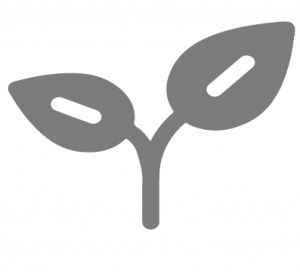The Cabinet Committee on Economic Affairs, under the leadership of Prime Minister Shri Narendra Modi, has taken a significant step to boost the agricultural sector in India. In a move to ensure remunerative prices for farmers and promote crop diversification, the government has approved a substantial increase in the Minimum Support Prices (MSP) for all mandated Rabi Crops for the Marketing Season 2024-25. This bold decision is a part of the government’s commitment to empower farmers, enhance food security, and reduce dependency on imports.
Overview
The Minimum Support Prices (MSP) for Rabi Crops have been increased to benefit the farming community and ensure they receive fair compensation for their hard work. The latest MSP revisions for the Marketing Season 2024-25 encompass various key crops, reflecting the government’s commitment to supporting the agriculture sector. These MSP revisions are aligned with the Union Budget 2018-19’s commitment to set MSPs at a minimum of 1.5 times the All-India weighted average Cost of Production. The government has achieved this goal, and it is expected to benefit farmers across the nation significantly.
Key points
- Here is an overview of the MSP revisions and their significance
-
- Wheat: The MSP for wheat has been increased to Rs. 2275 per quintal, marking a substantial rise from the previous year. This ensures a margin of 102 percent over the cost of production, offering an attractive incentive for wheat cultivation.
- Barley: Barley growers will benefit from an increased MSP of Rs. 1850 per quintal, with a margin of 60 percent over the cost of production. This is an encouraging move to promote barley cultivation.
- Gram: Gram farmers will receive an MSP of Rs. 5440 per quintal, with a 60 percent margin over the cost of production, making it a lucrative option for growers.
- Lentil (Masur): Lentil cultivation sees a significant boost with an MSP of Rs. 6425 per quintal, offering a substantial 89 percent margin over the cost of production, ensuring an attractive return for farmers.
- Rapeseed & Mustard: The MSP for rapeseed and mustard has been raised to Rs. 5650 per quintal, with a remarkable margin of 98 percent over the cost of production, making it a financially rewarding choice.
- Safflower: Safflower cultivation becomes more attractive with an MSP of Rs. 5800 per quintal, providing a 52 percent margin over the cost of production.
2. Empowering Farmers: The increased MSP ensures that farmers receive fair and remunerative prices for their crops, improving their livelihoods and financial security.
3. Crop Diversification: The government’s focus on promoting oilseeds, pulses, and millets encourages crop diversification. This diversification is vital for enhancing food security, reducing import dependency, and increasing farmers’ income.
4. Reducing Import Dependency: By increasing the MSP for crops like oilseeds and pulses, the government aims to reduce India’s dependence on imports, contributing to self-sufficiency in these essential agricultural commodities.
5. Promoting Crop Diversification and Food Security: The government is actively promoting crop diversification through initiatives like the National Food Security Mission (NFSM), which focuses on increasing the production of rice, wheat, pulses, and oilseeds. Additionally, the Pradhan Mantri Krishi Sinchayee Yojana (PMKSY) emphasizes efficient water management and irrigation practices to enhance crop productivity. The National Mission on Oilseeds and Oil Palm (NMOOP) aims to reduce the country’s dependence on oil imports by boosting the production of oilseeds and oil palm.
6. Empowering Farmers through Technology and Information: The government is empowering farmers with technology and information through initiatives such as the Kisan Credit Card (KCC) Scheme, KCC Ghar Ghar Abhiyaan, Kisan Rin Portal (KRP), and Weather Information Network Data Systems (WINDS). These efforts aim to provide easy access to credit, streamline the process of accessing financial assistance, extend financial tools to every household, and offer timely and accurate weather information for informed decision-making by farmers.
Conclusion
The government’s approval of increased Minimum Support Prices for Rabi Crops for the Marketing Season 2024-25 is a significant step towards empowering farmers and ensuring food security. These MSP revisions are in line with the government’s commitment to provide fair compensation to farmers and promote crop diversification. By focusing on oilseeds, pulses, and millets, the government aims to enhance farmers’ income and reduce India’s dependence on imports. Additionally, initiatives like the Kisan Credit Card Scheme and WINDS provide financial support and crucial information to farmers, further improving their lives and the overall agriculture sector in the nation. These measures collectively aim to revolutionize agriculture and enhance the well-being of farmers, ultimately contributing to the growth and prosperity of the agricultural community in India.








